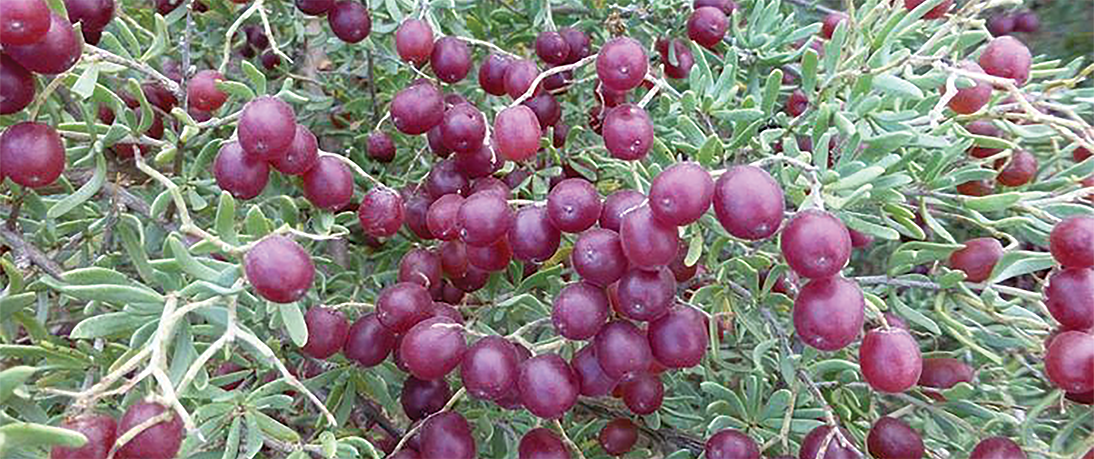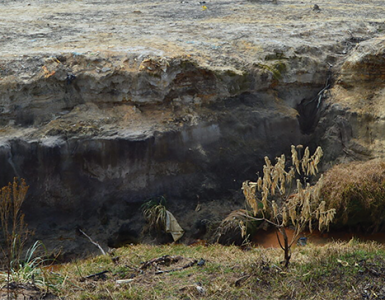POTENTIAL: The study has produced results that researchers describe as exciting as initial indications show the plant might be able to treat diabetes more holistically…
By WSAM Reporter
The global diabetes epidemic continues its relentless march, with projections suggesting 750 million sufferers by 2045. While current medications help control symptoms, they often come with undesirable side effects and don’t address the root causes of metabolic dysfunction.
The search for better solutions has turned scientists toward natural drugs, where traditional remedies may hold untapped potential. Among these, Nitraria roborowskii Kom – a hardy shrub growing in China’s harsh western regions – has shown intriguing properties in preliminary studies.
Its bright red berries, sometimes called “desert cherries,” have sustained local populations for generations, but only now are revealing their scientific secrets. This gap between traditional knowledge and modern understanding prompted researchers to investigate the plant’s therapeutic mechanisms systematically.
A study which has yielded compelling study evidence, published in the April 2025 issue of Chinese Journal of Modern Applied Pharmacy, is a collaborative initiative between Qinghai University and the Northwest Institute of Plateau Biology.
The number of people living with diabetes rose from 200 million in 1990 to 830 million in 2022, with prevalence rising more rapidly in low- and middle-income countries than in high-income countries, according to the World Health Organization (WHO).
Globally, an estimated 537 million adults aged 20–79 years are currently living with diabetes, the WHO says. This represented 10.5% of the world’s population in this age group in 2021.
In Africa, an estimated 24 million people were estimated to live with diabetes in 2021, and the organisation has predicted to increase by 129% to 55 million by 2045.
Using rigorous scientific methods, the team demonstrated how a concentrated extract from the desert berry (NRK-C) produced dramatic improvements in diabetic mice.
Over seven weeks of treatment, the natural compound outperformed expectations by simultaneously addressing high blood sugar, poor insulin response, and related metabolic disturbances through a previously underexplored biological pathway.
The research team’s comprehensive investigation yielded striking results, demonstrating berry’s multifaceted therapeutic potential.
Over a seven-week treatment period, the desert berry extract produced a remarkable 30-40% reduction in fasting blood glucose levels in diabetic mice, with efficacy increasing in a clear dose-dependent manner.
Perhaps most impressively, the researchers discovered that the natural compound restored insulin sensitivity by approximately 50% compared to untreated diabetic controls, as measured through sophisticated metabolic tests.
Beyond these primary benefits, the berry exhibited an unexpected breadth of action, normalising cholesterol profiles and slashing oxidative stress markers by up to 60 percent – effects rarely achieved by single pharmaceutical agents.
Molecular analysis revealed the extract’s secret lies in its ability to reactivate the PI3K/AKT pathway, essentially rebooting a critical metabolic signalling system that becomes dysfunctional in diabetes. Microscopic tissue examinations provided visual confirmation of NRK-C’s protective effects, showing preserved liver architecture and pancreatic integrity that starkly contrasted with the damage seen in untreated diabetic mice, according to the researchers.
The researchers added that these coordinated improvements across multiple physiological systems suggest that the berry works through a fundamental metabolic reset rather than simply masking symptoms, offering potential advantages over current single-target diabetes medications.
They said the discovery was particularly noteworthy because it achieved these comprehensive effects through a naturally occurring compound rather than the complex drug cocktails typically required for such broad metabolic benefits.
“These results are exciting because they suggest we might be able to treat diabetes more holistically,” explains Dr Yue Huilan, senior researcher on the project.
“Instead of just lowering blood sugar like most medications, this plant extract appears to help the body regain its natural metabolic balance. The implications could extend beyond diabetes to other conditions involving insulin resistance.”
The research team cautions that human trials are needed but believes this could represent a major step toward more natural diabetes management.
The discovery opens several promising avenues for diabetes care. Pharmaceutical companies may explore developing standardized NRK-C extracts as complementary therapies, while nutritionists could investigate incorporating the berries into functional foods.
Importantly, the findings validate traditional medicinal knowledge while providing a scientific basis for its effects.
As the research continues, scientists are particularly interested in whether the berry might help prevent diabetes in high-risk individuals or reduce complications in existing patients.
The study also highlights the importance of preserving and studying traditional medicinal plants, which may hold solutions to modern health challenges waiting to be rediscovered. In South Africa, diabetes is a major health concern, affecting a significant portion of the adult population and ranking as the second leading cause of death in the country. Approximately one in nine South African adults live with diabetes, with Type 2 diabetes being the most pre


































